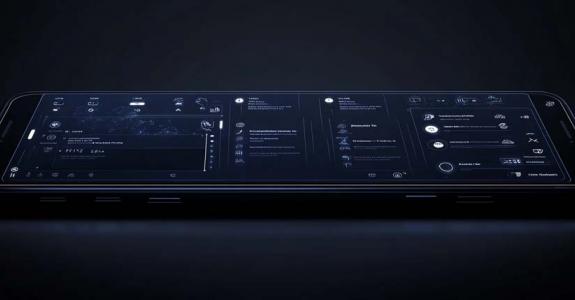Recent years have seen the rise of numerous devices and technologies. Changes are hitting the insurance industry - according to Accenture, 96% of insurers believe digital ecosystems change the insurance industry.
P&C (Property and casualty) insurance, the coverage that helps to protect people's lives and their property, doesn't sit on the sidelines. It is seizing the opportunities of the digital revolution as well.
You've probably asked yourself what is Digital Transformation and how it is changing the insurance as we know it. Let's see.
Spurred by a series of technological advancements, P&C insurance not only introduces a new range of innovative solutions but also reimagines all aspects of their entire business from the ground up. Why?
Insurance companies can no longer work according to templates and pre-prepared and generalized models. To cater to the new age of digital customers, P&C insurers personalize the service they provide. Social networks, customer-facing phone apps, auto-monitoring devices, wearable activity tracking tools allow customizing P&C services to customers' needs. Let alone drone pilots that could become the next claims specialists.
Now the insurance product line doesn't come in the form of several ready-made packages. Instead, an insurance policy is likely to involve each client's characteristics and use this data to shape the price, conditions, and requirements.
Have you leveraged granular usage-based insurance coverage yet? Let's break down the key drivers behind the digital transformation in insurance to unlock new values for your business.
Digital Transformation Change Traditional Insurance
Insurtech companies are nipping at the heels of traditional insurance companies with their unique offerings. To bring this new class of products to life, Insurtech leverages artificial intelligence, machine learning, and the Internet of Things.
One of the most well known within the Insurtech community is Lemonade, American property and casualty insurance company powered by AI and behavioral economics.
"Lemonade set out to make insurance loveable, but also to transform it from a necessary evil into a social good", its CEO explained their progress in an interview to Forbes.
Practically every Insurtech company runs with lean cost margins and offers high-tech solutions at a low cost. This way, they disrupt traditional insurance because Insurtech organizations easily find weaknesses in regular cars, life, travel, real estate insurance, and turn them into their advantages and better interaction with the clients.
Traditional insurers are facing a fundamental fact: compared to template blanks, genuine Insurtech value propositions for consumers are gaining ground. Can traditional insurance still compete? Yes, but there's a risk of falling short in many areas.
Spending time behind paperwork, filling out applications, lengthy reviews, vigorous contracts leave a poor impression on the service. A low frequency of updating policies inevitably leads to weak and short-term relationships with customers.
Numerous research proves that digital reality in insurance requires immediate action from insurers and explains how embedding digital capabilities creates value. To catch up with these trends, let's get a closer look at how Usage-Based Insurance (UBI), Telematics, and Chatbots are making headway in the insurance industry.
Telematics Affects Insurance
Telematics, or long-distance transmission of digital information, provides data directly from a device to the insurer, guaranteeing a source of immediate customer insight.
Telematics holds excellent potential for P&C insurance providers: from reducing the frequency and severity of claims to strengthening policyholder engagement and brand affinity.
In the auto market, telematics encourages safe driving behavior that results in fewer accidents. With more specific accident data available in real-time, insurers can more accurately and efficiently settle claims, detect fraud, and offer immediate assistance. Thus, telematics opens additional revenue channels.
At home, telematics can connect to in-home video cameras to deliver digital records of the home's contents, facilitating claims filings and making it easier to remediate losses. Furthermore, utility partnerships can help insurers analyze energy consumption data and usage activity patterns to increase the refinement of pricing liability and dwelling coverage.
An example of a telematics company is British Octo Telematics, which uses several behavioral metrics to create an individual's risk profile. Another one, DriveSafe, is used in the United States and Canada: they collect comprehensive driving analysis for insurance companies.
Telematics opens the doors to UBI programs that match the current consumer demands.
Usage-Based Insurance (UBI)
UBI is a type of vehicle insurance where expenses depend not only on the kind of transport but also on the distance, time spent on the road, the nature of driving, location, time of day, the historical riskiness of the road, speeding, talking on a cell phone, etc. UBI companies simply track drivers' behavior with the help of sensors and geolocation services.
Automotive telematics technology makes UBI a rapidly evolving game-changer for the insurance field and separates it from the traditional formulaic premium quoting. The global UBI market was forecast to grow to 105.12 billion U.S. dollars by 2027.
Usage-based insurance enhances trust and transparency across the automotive insurance marketplace. With usage-based insurance, safer drivers pay less for auto insurance.
Moreover, highly dynamic UBI products continuously adapt to an individual's behavioral models. Thus, insurance transitions from a "purchase and annual renewal" pattern to a continuous cycle.
UBI is undoubtedly a win-win for both the policyholder and the insurance company. It provides an incentive for the driver to adopt safer driving practices, which in turn, lower the number of accidents and the number of claims the insurance company has to payout.
P&C Chatbots
Another digital transformation Insurtech focuses lays on Chatbot. This software has been widely used in the insurance sector for more than a decade. But only recently chatbots evolved intoautomated insurance agents. They help customers to sort through policy and can recommend an appropriate product. Chatbot agents can explain plan coverage to the customer and offer personalized recommendations.
Apart from a significant impact on the service, such agents boost acquisition, slash claims processing, increase brand engagement, and minimize the costs to serve. Spending on Chatbots and Cognitive AI in general among insurers is expected to rise to $1.4 billion by 2021, according to IDC.
Unlike human agents or call center reps, P&C chatbots are available anytime. They work without days off and breaks and can quickly process any applications submitted by a customer. Moreover, P&C chatbots can also assist live agents and reduce these burdens by rapidly providing the information agents need and ensuring the right set of insurance products and services are mapped to the customer in question. This means an insurance company can process more requests by spending fewer resources on it, which is an outstanding competitive advantage.
What's Next for Insurance Companies?
No more just a transaction with customers, no more a reaction to an event - P&C insurance business has become meaningful and interactive. Companies all over the world strive to keep pace with the ever-growing and ever-changing world.
If you want to embrace the change, you will probably need a trustworthy partner to integrate the leading technology into your business. Zfort Group offers unparalleled Digital Transformation Services. Together we will create a business from scratch or readjust the existing business to your needs. Contact us to build your own Digital Transformation.






